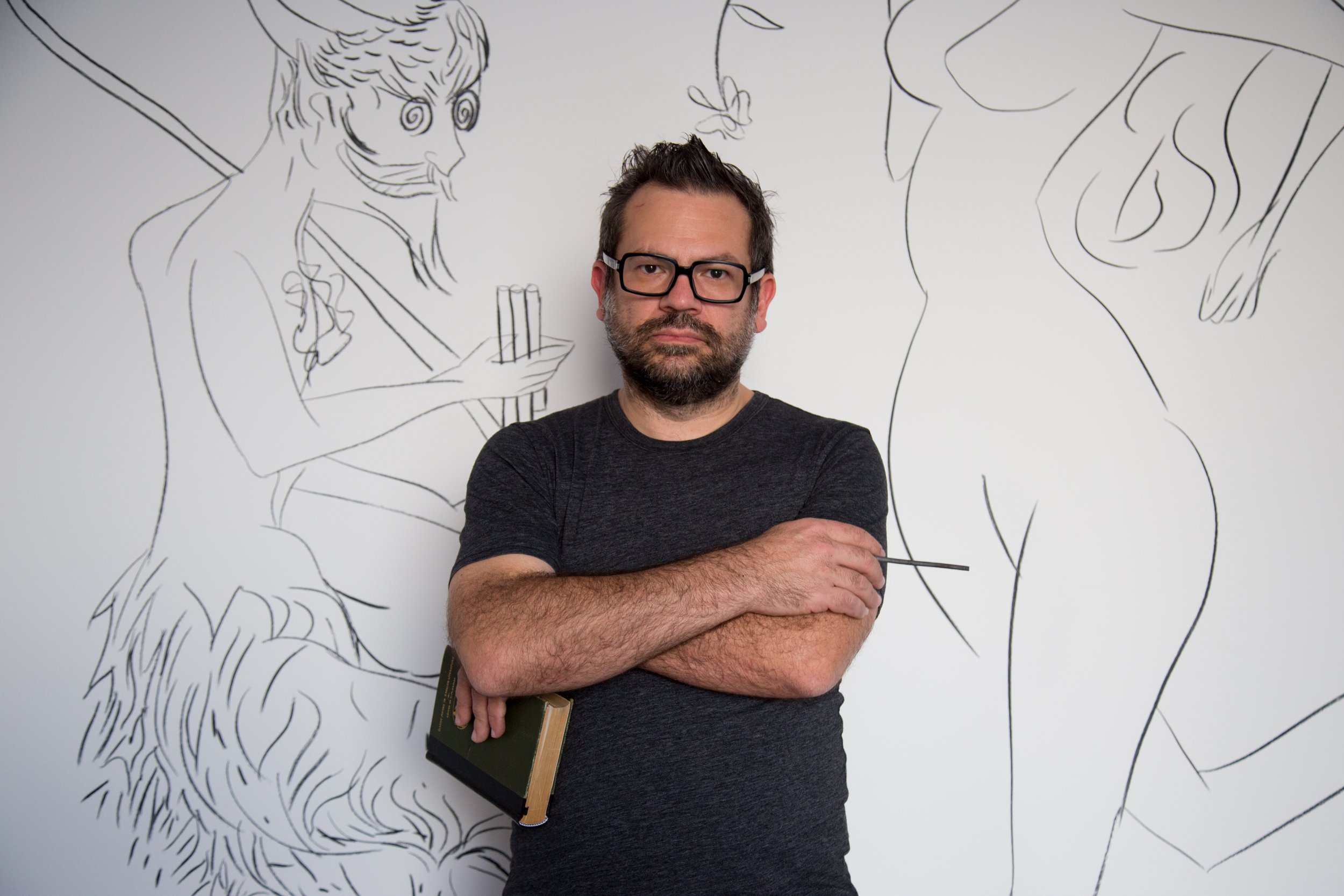-
During his residency at El Ganzo, acclaimed artist Pedro Reyes embarked on an intense preparatory phase for an upcoming exhibition in New York, where he planned to showcase 130 drawings. This period at El Ganzo served not only as a creative warm-up but also as a crucial reconnect with his foundational drawing skills—a discipline he had not publicly exhibited despite its long-standing role in his artistic process.
The residency at El Ganzo became a pivotal moment for Reyes, allowing him to integrate his deep-seated philosophical engagements with his artistic practice. The walls adorned with sketches acted as a live gallery of his intellectual journey, mapped out through portraits that captured both the essence of the figures and Reyes's evolving artistic technique. This period was not only a testament to his preparation for a significant professional milestone but also a demonstration of how art and philosophy intertwine to create impactful, thoughtful visual narratives.
Pedro Reyes’s residency at El Ganzo underscores the unique intersection of art, personal development, and intellectual exploration, highlighting the artist’s commitment to using visual art as a medium for profound personal and societal reflection.
-
Pedro arrived at El Ganzo with specific intentions, armed with cardboard for initial sketches and an eagerness to fill the expansive walls of his residency room with drawings. The environment became a dynamic canvas, an "open notebook" where he could freely explore and iterate. He engaged in what he described as "action drawing," a vigorous, explorative process that allowed him to experiment and refine his portrayals of various historical figures. Notably, he repeatedly sketched figures such as Henry David Thoreau and Noam Chomsky, using the walls to perfect his technique and conceptualize a puppet of Chomsky.
The choice of figures like Thoreau and Chomsky was deeply intentional. Reyes is drawn to personalities who provide philosophical insights—tools for living, understanding the world, and addressing social issues. These figures, including the ancient philosopher Hypatia and other Greek thinkers, were not just subjects of artistic representation but were also integral to Reyes's intellectual and ethical framework. By drawing these figures, Reyes engaged in an act of indexing—each sketch a reminder and a reflection of the ideas contained within his extensive readings in philosophy.
-
What is your memory of El Ganzo?
For a long time El Ganzo had been trying to arrange a visit. It was delayed several times because of our other commitments. But finally we found a window to go and it was a treat because we were given this humungous room, it is like... you could skate in it. Obviously it was very enjoyable, you know, for the four of us – me, my wife and my kids to be there. Perfect combination of work and leisure, which for me is like, really I enjoy so much what I do that I suffer if I am not able to work. It is very hard for me to have a holiday. Thats why I like very much El Ganzo because I could work. Basically doing doodles on the wall of the room. For me, it doesn't get better than that. (laughs)
What are your thoughts surrounding the art residency within a hotel?
I think it is a beautiful concept that has to do with place- making. The fact that you have artist staying and leaving some sort of trace of their stay is a concept that has a huge potential. This is the best you can do instead of having a standardized design which can be very good but just having the diversity of artists doing interventions is not only very enjoyable for the artists but also very enjoyable for the guests that live in the hotel.
There is all this other dimension that has to do with the recording studio, with the live acts that happen there. So it is something that is not only beautiful in its artistic dimension but also in its human dimension because it has something to do with friendship.
What do you feel about the value of art in a place like El Ganzo?
I think that art having a value is a positive thing. In Mexico, we had this whole tradition of Muralism etc. and every cent that the Mexican government spent back in the day in asking painters to paint the walls has brought back to the country thousand times or million times more than what the investment was. And if you invest in culture, in art, its something that is always a lasting investment.
PEDRO REYES
Meet Pedro Reyes, a Mexico City native born in 1972, who traded architectural blueprints for the boundless world of sculpture. Yet, Pedro isn’t just any sculptor; his creations are stages for theatre, activism, and a touch of psychology.
From the penetrable Capulas sculptures (2002-08) to the politically charged puppetry of Baby Marx (2008) and Manufacturing Mischief (2018), Reyes' work is anything but ordinary. In 2008, he launched 'Palas por Pistolas,' an inspired campaign turning 1,527 voluntarily donated guns into shovels to plant the same number of trees. This blossomed into 'Disarm' (2012), an awe-inspiring project that transformed 6,700 destroyed weapons into musical instruments. 🎶
His 'Sanatorium' (2011) takes the cake—a pop-up clinic blending art with psychology to provide unexpected treatments, catching the eyes of the Guggenheim in NYC and more globally from Documenta 13 in Kassel to Whitechapel Gallery in London.
Then there’s pUN (People's United Nations), started in 2013 at the Queens Museum, a mock UN assembly where everyday folks use art, theater, and psychology to tackle global issues, proving that creativity can indeed change the world.








